Quintus Antistius Adventus Postumius Aquilinus
Quintus Antistius Adventus Postumius Aquilinus (c.128 - after 180): Roman senator and general.
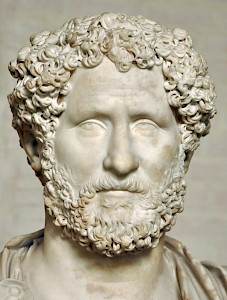
The evidence for the career of Quintus Antistius Adventus Postumius Aquilinus consists of several inscriptions: two from modern Algeria,note one from Hadrian's Wall in Northern England,note and one from the Netherlands.note The inscriptions mention the stages in his career.
Early career
Quintus Antistius Adventus Postumius Aquilinus was born in c.128 in a senatorial family from the Numidian city of Thibilis, halfway between Cirta (modern Constantine) and the port of Hippo Regius (Annaba). He must have benefited from the network of African senators that became increasingly influential in the Roman Empire during the second century. This network would produce several consuls and an emperor, Septimius Severus from Lepcis Magna.
From the inscriptions, we can deduce that Antistius arrived in Rome shortly before 150. He was one of the members of the college of vigintiviri, junior magistrates, most of them senator's sons, who were appointed every year. He was one of the four men responsible for the maintenance of the streets in Rome.
The next step in his career was a tribunate in the First Legion Minervia in Bonn on the Rhine, presumably in 151-152. This was a normal career move, just like the next stop: a quaestorship, a financial office. It brought Antistius to Thessaloniki. After this office, he entered the lower ranks of the Senate. It would have been strange if it hadn't happened, because he was from a senatorial family and had a good patronage network.
Antistius was made responsible for overseeing the equestrian order, the second tier of the Roman elite, and after that he was a tribune of the people. These were no sine cure jobs, but he did not have to travel much, could stay in the mansion he must have had in Rome, and he even may have had an opportunity to visit his Algerian estates.
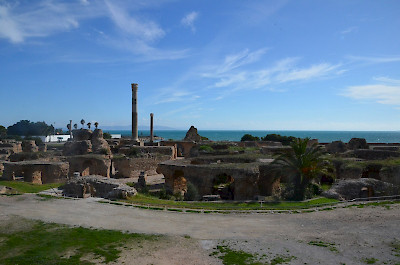
He will certainly have visited them when he was assistant of the governor in Africa. During the years 155-157, he resided in Carthage, where he must have witnessed how the Antonine Baths were built. He must have visited his hometown Thibilis before or after his tenure.
War
In 158, Antistius was praetor, a legal position. Because this office was usually held at the age of thirty or later, we can assume that Antistius must have been born in 128 or maybe 127 or 126, but not earlier.
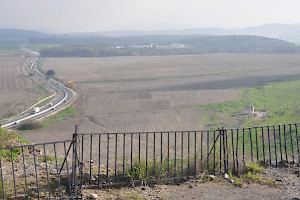
A praetorship determined one's further career. A praetor already had military experience, knew the judiciary and financial sectors, had traveled quite a bit, had built up a network of one's own, and was known to the emperor. Now, one was ready for the really important jobs and for Antistius, this meant the beginning of a military career. He was to command the Sixth Legion Ferrata in Carpacotna (in Galilee).
Apparently he did his job well, because in 162 he was commander of the Second Legion Adiutrix, which took part in the war that emperor Lucius Verus waged against the Parthians. Here, Antistius was decorated, which means that he had gained combat experience. Immediately afterwards he was appointed as governor of the province of Arabia. His residence was Bosra, just south of Damascus, and he must have traveled to cities such as Petra and Hegra.
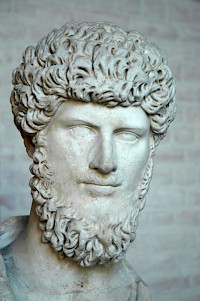
After a brief spell in Rome as curator of public works, he was again sent to the front. The 160s were troubled times: an enormous epidemic was raging (possibly a disease similar to smallpox) and many northern tribes were active on the Danube border, even reaching Aquileia on the Adriatic Sea. Lucius Verus again traveled to the front, granting Antistius extraordinary powers to protect Italy and the Alpine region. He also had to build two new legions, the Second and Third Italica. When Lucius Verus succumbed to the epidemic and his co-emperor Marcus Aurelius took over, Antistius will have advised his new commander in chief. Perhaps this is when he received a priesthood: he was a fetialis. This office was primarily a recognition of services rendered.
To the north again
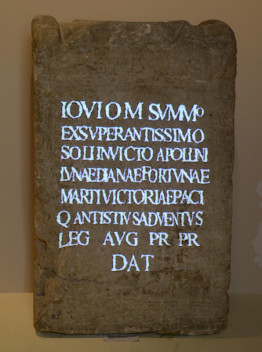
Antistius subsequently became governor of Germania Inferior (in 170 CE). This means that the emperor trusted him completely, because subunits of the two legions that guarded the Rhine frontier, I Minervia in Bonn and XXX Ulpia Victrix in Xanten, had been transferred to the Danube front. Antistius was therefore unable to prevent a group of Chauci from bypassing the forts along the Rhine and attack the Flemish coastal area. His colleague Didius Julianus, governor of Belgica, took care of them.note
It must have been in these years, between 170 and 173, that Antistius visited the auxiliary fort at Vechten, ancient Fectio, and dedicated a stela to Jupiter.
A splendid career
Shortly afterwards, Antistius exchanged his residence in Cologne for London, where he was governor of Britannia. This is the last stage of his career that we know about. What we do know, however, is that a son of Antistius and his wife Novia Crispina, Lucius Antistius Burrus, married princess Vibia Aurelia Sabina, a daughter of Marcus Aurelius and his wife Faustina II, shortly before 180. The younger Antistius was consul in 181, together with his brother-in-law, the emperor Commodus.